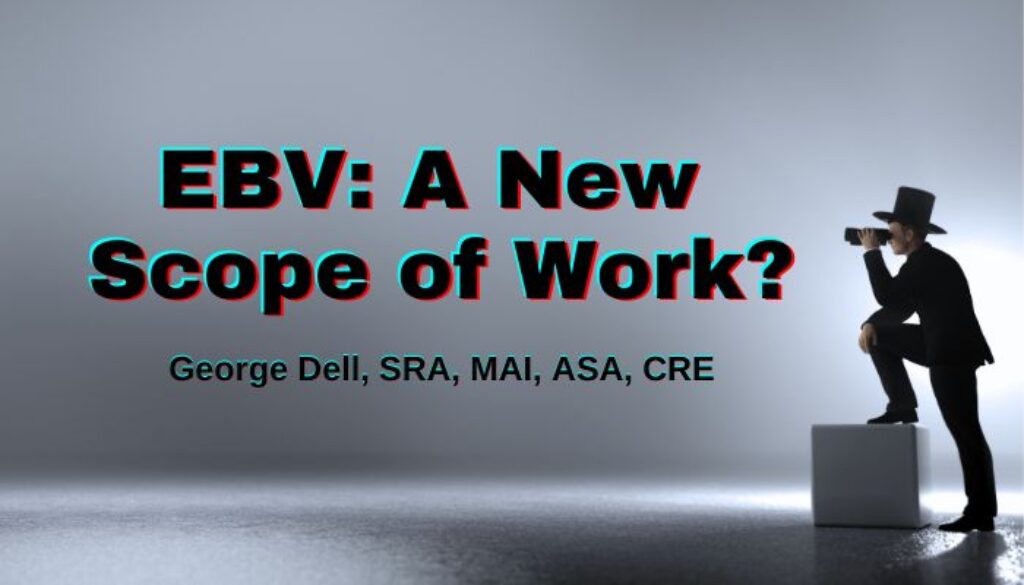Scope of Work is what you plan to do. It requires you to identify the problem and identify the work necessary. The goal of USPAP (Uniform Standards of Professional Appraisal Practice) is credibility. The appraiser should be “worthy of belief.” A measure of reliability or usefulness of the appraisal is not required.
Editor’s Note: This is Standards, part 3.12 of George Dell’s series on How Do I Move to EBV? Links to the earlier posts are here.
Generally, a scope of work document is also a summary of a project’s development process. It’s a summary of work and deliverables, but may be flexible if the work uncovers relevant issues. It should align with the assignment agreement whether verbal or written.
In Appraisal, there are additional work-scope requirements, as well as ‘tests’ of acceptability.
Requirements include:
- Property identification
- Property inspection
- Data researched
- Analyses applied
Unfortunately, data analyzed is not a USPAP requirement. This is a glaring analytical omission, a core principle of the science of data analysis. Right data, right answer. Wrong data, wrong result.
However, USPAP does require six specific factual elements, including assumptions, intended users, use, value definition, effective date, and the subject. The “Acceptability” rule of the work scope is troublesome. It enables, requires, and embeds and perpetuates bias. It restricts, limits, and discourages today’s data analysis technology for appraisal. It requires appraisers to do it the way it has always been done, cause “we’ve always done it that way.” And do what your client expects! Biased or not. Accurate or not!
It appears the scope of work requirement, as we know it today, may be obsolete. How did this happen?
Standards were written decades ago in times of property analysis. Property analysis was needed for pre-computer days. It was designed to encourage good judgment based on practical experience, and personal mentorship. It continues today because of the interaction of the “five frictions: practices, standards, education, regulation, and client expectation.
Today’s promise is data analysis, data science. The analysis is based on econometrics, data, and visual interaction with the field-related expert. The focus is on how good is the analysis, rather than how good is the appraiser! The issue of bias is also different. In the past, personal unbiasedness and ethics was requisite for responsible, believable opinion. Today, analytical unbiasedness is the focus. Given available complete, or near-complete data, the scope of work focuses on the most important element (missing from USPAP) – data analyzed. The focus is not on property identification, but rather on relevant market information, similarity matched, and algorithmically reckoned (with a reliability assessment).
A modern Scope of Work standard is needed for all forms of valuation. For appraisals, for AVMs, for hybrids, and even GSE (FannieMae, Freddie Mac) ‘quant’ based waivers. It must be a “standard” standard. Valuation is standard, no matter who does it or what you call it.
Data science explicitly recognizes the need for the field-related expert – the appraiser – where the focus is on market analysis, not comparing comps. With objective data-selection algorithms, not subjective ‘trust me’ comp picking. While analytic data selection is not simple, we note that the emphasis of data science, (and EBV – Evidence Based Valuation)© is on similarity matching.
Work is underway on data-science based standards to include clear work scope parameters.
